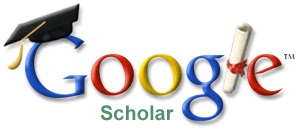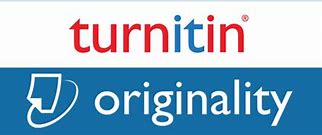HUBUNGAN AKUISISI PENGETAHUAN, CIPTA PENGETAHUAN, ALIH PENGETAHUAN, KOMPETENSI PENGEMBANGAN, DAN KINERJA TIM PROYEK PENGEMBANGAN PADA PERUSAHAAN TELEKOMUNIKASI DI INDONESIA
DOI:
https://doi.org/10.47313/jib.v42i1.1165Keywords:
knowledge transfer, knowledge acquisition, knowledge creation, development competence, performanceAbstract
In Indonesian telecommunication industry, the service providers have rigorous competition, with complex regulations and high investments. To survive, companies must have organizational capabilities to adapt, innovate, and act dynamically. The companies in this industry require deep external knowledge from outside of the organization to adapt to new technologies and to make new products and services. However, the success percentage of a project in the industry is still low only 39%, globally. This research mainly focuses on the discussion about improvement of team performance in the development projects of the telecommunication operator companies in Indonesia. This research also relates to knowledge acquisition, knowledge transfer, and knowledge creation and their relationship to development competence, to achieve optimal project performance. The hypotheseses were tested using the Structural Equation Modeling (SEM) approach with SmartPLS software. Valid data obtained from 133 respondents of project leaders of telecommunications operator companies in Indonesia.The result shows the significant effects of knowledge acquition, transfer, and creation among them and also towards development competence, moreover development competence towards organizational performance in development project team. This research has given theoretical and managerial contributions to strategic management. All of these will extend and enrich management theories.References
Afuah, A. (1998). Innovation Management: Strategies, Implementation &
Profit. International Edition. New Delhi: Mc Graw-Hill Education
Asia.
Afuah, A. (2009). Business Model, A Strategic Management Approacht. New
York: Oxford University Press.
Alavi, M. (1994). Computer-mediated collaborative learning: An empirical
evaluation. MIS Quarterly, 18 (2), 159-174.
Argote, L., & Ingram, P. (2000). Knowledge Transfer: A Basis for
Competitive Advantage in Firms Organizational Behaviour and
Human Decision Processes. 82 (1), 150–169.
Atuahene-Gima, K. (2003), The Effects of Centrifugal and Centripetal Forces
on Product Development Speed and Quality: How Does Problem
Solving Matter? Academy of Management Journal, 46 (3), 359-373.
Atuahene-Gima, K., & Murray, J.Y. (2007). Exploratory and Exploitative
Learning in New Product Development: A Social Capital Perspective
on New Technology Ventures in China. Journal of International
Marketing, 15 (2), 1-29.
Beckett, A.J., Wainwright, C.E.R., & Bance, D. (2000). Knowledge
management: strategy or software? Management Decision, 601- 606.
Boumgarden, P., Nickerson, J., & Zenger, T.R. (2012). Sailing into the wind:
Exploring the relationships among ambidexterity, vacillation, and
organizational performance. Strategic Management Journal, 33
(6), 587–610.
Brown, S.L., & Eisenhardt, K.M. (1998). Time pacing: competing in markets that won't stand still. Harvard Business Review, 76(2), 59-69.
Carlile, P.R., & Rebentisch, E.S. (2003). Into the black box: The knowledge
transformation cycle. Management science, 49(9), 1180-1195.
Christensen, C.M., Suarez, F.F., & Utterback, J. M. (1998). Strategies for
Survival in Fast-Changing Industries. Management Science, 44(12),
S207-S220.
Chua, A. (2004). Knowledge management system architecture: a bridge
between KM consultants and technologists. International Journal of
Information Management, 24, 87–98.
Colakoglu, S. (2009). Enhancing Subsidiary Absorptive Capacity: The Role
of Knowledge Acquisition Practices and Intellectual Capital.
Dissertation, the State Universiy of New Jersey, 2009.
Cooper, R.G., & Edgett, S.J. (1999). Product Development for the Service
Sector—Lessons from Market Leaders. Cambridge, MA: Perseus
Books.
Dalkir, K. (2005). Knowledge management in theory and practice. Germany,
Burlington, MA: Elsvier Butterworth-Heinemann.
Davenport, T. H., & Prusak, L. (1998). Working knowledge: how
organizations manage what they know. Boston, MA: Harvard
Business School Press.
Demarest, M. (1997). Understanding Knowledge Management. Long Range
Planning, 30(3), 374-384.
Dumaine, B. (1989). How managers can succeed through speed. Fortune,
, 4-54.
Earl, M. (2001). Knowledge management strategies: Toward a taxonomy.
Journal of management information systems, 18(1), 215-233.
Engwall, L., & Kipping, M. (2002). Introduction: Management consulting as
a knowledge industry. In M. Kipping & L. Engwall (Eds.).
Management consulting. Emergence and dynamics of a knowledge
industry (pp. 1-16). Oxford: Oxford University Press
Ferdows, K. (2006). Transfer of Changing Production Know-How.
Production and Operation Management, 15 (1), 1-9.
Frigenti, E., & Comninos, D. (2002). The Practice of Project Management: A
Guide to the Business-Focused Approach. London: Kogan Page
Publishers.
Gelbard, R., & Carmeli, A. (2009). The interactive effect of team dynamics
and organizational support on ICT project success. International
Journal of Project Management, 27, 464–470.
Ghozali, I. (2014). Structural Equation Modeling, Metode Alternatif dengan
Partial Least Square (PLS) (4th ed.). Badan Penerbit Universitas
Diponegoro.
Ha, A. Y., & Porteus, E. L. (1995). Optimal timing for reviews in concurrent
design for manufacturability. Management Science, 41, 1431-1447.
Hair, J., Black, W., Babin, B., Anderson, R., & Tatham, R. (2010).
Multivariate data analysis (7th ed.). Uppersaddle River, N.J.: Pearson
Prentice Hall.
Hamel, G. (1996). Strategy as Revolution. Harvard Business Review. July –
August Edition.
Hamel, G. (2000). Leading the Revolution. Boston, MA: Harvard Business
School Press.
Hoegl, M., & Gemuenden, H.G. (2001). Teamwork Quality and the Success
of Innovative Projects: A Theoretical Concept and Empirical
Evidence. Organization Science, 12 (4), 435 – 449.
Joglekar, N. R., Yassine, A. A., Eppinger, S. D., & Whitney, D. E. (2001).
Performance of coupled product development activities with a
deadline. Management Science, 47, 1605-1620.
Jansen, J. J. P., Van den Bosch, F. A. J., & Volberda, H. W. (2005).
Managing potential and realized absorptive capacity: How do
organizational antecedents matter? Academy of Management Journal,
, 999-1015.
Kerzner, H. (2004). Advanced Project Management: Best Practices onImplementation. New York: John Wiley & Sons.
Kim, B. (1998). Optimal development of production technology when
autonomous and induced learning are present. International Journal
of Production Economics, 55, 39-52.
Kirca, A.H., Jayachandran, S., & Bearden, W.O. (2005). Market orientation:
a meta-analytic review and assessment of its antecedents and impact
on performance. Journal of Marketing, 69, 24–41.
Ko, Dong-Gil., Kirsch, L.J., King, W. (2005). Antecedents of knowledge
transfer form consultants to client in enterprise. MIS Quarterly, 29(1),
Koskinen, K.U., Pihlanto, P., & Vanharanta, H. (2003). Tacit knowledge
acquisition and sharing in a project work context. International
Journal of Project Management, 281-290.
Lane, P. J., & Lubatkin, M. (1998). Relative absorptive capacity and
interorganizational learning. Strategic Management Journal, 19, 461-
Lai, Y.L., & Lin, F.J. (2012). The Effects of Knowledge Management and
Technology Innovation on New Product Development Performance:
An Empirical Study of Taiwanese Machine Tools Industry. Social
and Behavioral Sciences, 40, 157 – 164.
Li, C.R., Chu, C.P., & Lin, C.J. (2010). The contingent value of exploratory
and exploitative learning for new product development performance.
Industrial Marketing Management, 39, 1186–1197.
Ling, F.Y.Y., Low, S.P., Wang, S.Q., & Lim, H.H. (2009). Key project
management practices affecting Singaporean firms’ project
performance in China. International Journal of Project Management,
, 59–71.
Liyanage, C., Elhag, T., Ballal, T., & Li, Q. (2009). Knowledge
Communication and Translation – a Knowledge Transfer Model.
Journal of Knowledge Management, 13(3), 118-131.
Liu, C.Y., Fu, Q.F., & Li, F.Z. (2002). The Impact of Knowledge
Management Capability on the Performance of New Product Development. Journal of Sun Yatsen University, 42, 119-127.
Lovelace, K., Shapiro, D.L., & Weingart, L.R. (2001). Maximizing CrossFunctional New Product Teams' Innovativeness and Constraint
Adherence: A Conflict Communications Perspective. Academy of
Management Journal, 44 (4), 779-793.
Lynn, G. S., & Reily, R. R. (2002). Growing the top line through innovation.
The Chief Executive, 8, 17-20.
Macher, J. T. (2006). Technological development and the boundaries of the
firm: A knowledge-based examination in semiconductor
manufacturing. Management Science, 52, 826-843.
March, J. G. (1991). Exploration and Exploitation in Organi zational
Learning. Organization Science, 2 (1), 71-87.
Manor, B., & Schulz, M. (2001). The uncertain relevance of newness:
Organizational learning and knowledge flows. Academy of
Management Journal, 44 (4), 661–681.
Marsh, S.J., & Stock, G.N. (2006). Creating Dynamic Capability: The Role
of Intertemporal Integration, Knowledge Retention, and
Interpretation. Journal of Product Innovation Managemen, 23(5),
–436.
Matsuo, M. (2015). Human resource development programs for knowledge
transfer and creation: the case of the Toyota Technical Development
Corporation. Journal of Knowledge Management, 19 (6), 1186-1203.
Menor, L.J., Tatikonda, M.V., & Sampson, S.E. (2002). New service
development: areas for exploitation and exploration. Journal of
Operations Management, 20, 135–157.
Menor, L.J., & Roth, A.V. (2007). New service development competence in
retail banking: Construct development and measurement validation.
Journal of Operations Management, 25, 825–846.
Morris, P. W., & Hough, G. H. (1987). The anatomy of major projects: A
study of the reality of project management. Chicago: Wiley.
Ozkan, G.F. (2009). Essays on knowledge management strategies in new product development. UMI Dissertations Publishing, Georgia Institute
of Technology, 2009.
Parent, R., Roy, M., & St-Jacques, D. (2007). A systems-based dynamic
knowledge transfer capacity model. Journal of Knowledge
Management, 11(6), 81-93
Pasaribu, M. (2009). Kondisi Anteseden dalam Implementasi Best Practise
Sharing di Lingkungan PLN (persero): Ringkasan Disertasi. Depok:
FE PPIM, 2009.
Pinto, J. K., & Slevin, D. P. (1988). Critical Success Factors across the
Project Life Cycle. Project Management Journal, 19(3), 67–75.
Project Management Institute. (2013). A Guide to the Project Management
Body of Knowledge (PMBOK Guide) – Fifth Edition. Pennsylvania:
Author.
Rankin, J.H., & Luther, R. (2006).The Innovation Process: Adoption of
Information and Communication Technology for the Construction
Industry. Canadian Journal of Civil Engineering, 33(12), 1538.
Roemer, T. A., Ahmadi, R. H., & Wang, R. H. (2000). Time-cost trade-offs
in overlapped product development. Operations Research, 48, 858–
Saenz, J., Aramburu, N., & Rivera, O. (2009). Knowledge Sharing and
Innovation Performance. Journal of Intelectual Capital, 10, 22-36.
Samaddar, S., & Kadiyala, S. S. (2006). An analysis of interorganizational
resource sharing decisions in collaborative knowledge creation.
European Journal of Operational Research, 170, 192–210.
Sanchez, R., Heene, A., & Thomas, H., (1996). Towards the theory and
practice of competence-based competition. In: Sanchez, R., Heene, A.,
Thomas, H. (Eds.), Dynamics of Competence-based Competition—
Theory and Practice in the New Strategic Management. Tarrytown,
NY: Elsevier Science Inc.
Sanchez, R. (1997). Managing articulated knowledge in competence-based
competition. In R. Sanchez, & A. Heene (Eds.), Strategic learning and
knowledge management. New York: Wiley.
Santiago, L. P., & Vakili, P. (2005). On the flexibility in R&D project.
Management Science, 51, 1206-1218.
Scott, M. C. (1998). The intellect industry: Profiting and learning from
professional service firms. Chichester: John Wiley & Sons.
Schulz, M., & Jobe, L.A. (2001). Codification and Tacitness as Knowledge
Management Strategies: an Empirical Exploration. Journal of High
Technology Management Research, 12(1), 139-165.
Silalahi, U. (2010). Hubungan Corporate Entrepreneurship dan Knowledge
Management Sebagai Basis Inovasi BUMN Go-Public: Studi
Komparasi pada BUMN Go-Public Indonesia Berteknologi Dinamis
dan Berteknologi Stabil: Ringkasan Disertasi. Depok: FE PPIM,
Slater, S.F., & Narver, J.C. (1999). Market-oriented is more than being
customer-led. Strategic Management Journal, 20(12), 1165–1168.
Standish Group International (2014). Chaos Report 2014.
https://www.projectsmart.co.uk/white-papers/chaos-report.pdf
Szulanski, G. (2003). Sticky Knowledge: Barriers to Knowing in the Firms.
Great Britain: Sage Publications.
Terwiesch, C., & Loch. C. H. (1999). Measuring effectiveness of overlapping
development activities. Management Science, 45, 455–465.
Todorova, G., & Durisin, B. (2007). Absorptive capacity: Valuing a
reconceptualization. Academy of Management Review, 32, 774-786.
Van den Bosch, F. A. J., Volberda, H. W., & De Boer, M. (1999).
Coevolution of firm absorptive capacity and knowledge environment:
Organizational forms and combinative capabilities. Organization
Science, 10(5), 392-416.
Walczak, S. (2005). Organizational knowledge management structure. The
Learning Organization, 12(4), 330-339.
Wei, C.C., Choy, C. S., & Yew, W. K. (2009). Is the Malaysian
telecommunication industry ready for knowledge management
implementation? Journal of Knowledge Management, 13(1), 69-87.
Yli-Renko, H., Autio, E., & Sapienza, H. J. (2001). Social capital, knowledge
acquisition, and knowledge exploitation in young technology-based
firms. Strategic Management Journal, 22, 587-613.
Zahra, S. A., & George, G. (2002). Absorptive capacity: A review,
reconceptualiztaion, and extension. Academy of Management Review,
, 185-203








